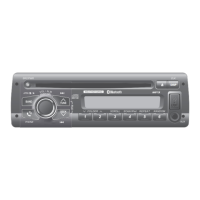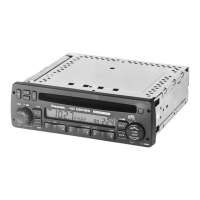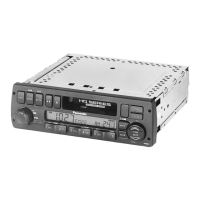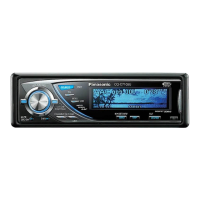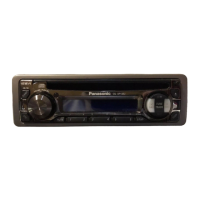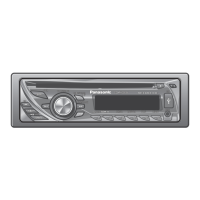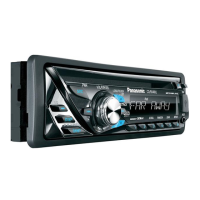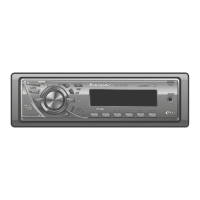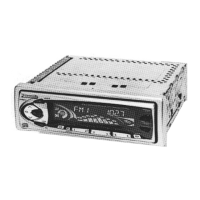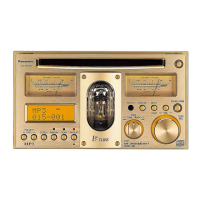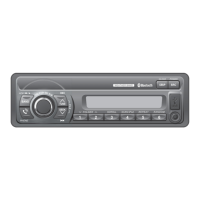
Do you have a question about the Panasonic PP105168 and is the answer not in the manual?
| Brand | Panasonic |
|---|---|
| Model | PP105168 |
| Category | Car Receiver |
| Language | English |
Alerts to important instructions and potential severe injury or death if instructions are not heeded.
Crucial precautions for operating and installing the unit to prevent accidents and ensure safe usage.
Alerts to important instructions and potential injury or material damage if instructions are not heeded.
Advises on safe usage, volume levels, environmental exposure, and operation while driving.
Advises on safe installation practices, wiring, component use, and mounting.
Warns about connecting USB devices directly and positioning them to avoid obstruction or injury.
Details FCC rules, RF exposure limits, and notices for residential installations.
Describes Front and Rear AUX terminals for connecting external audio devices.
Covers Sound control, CAN-readiness, amplifier fault detection, memory, illumination, and clock.
Details Bluetooth® functionality and USB connector for audio playback and device connection.
Lists USB Mass Storage Class compatibility, standard, file system, and capacity recommendations.
Lists specific iPod and iPhone models supported by the unit.
Steps for initial power activation and accessory indicator light check.
Guides for setting and adjusting the unit's clock display.
Instructions for powering the unit on/off and using the one-hour timer function.
How to select between Radio, USB, iPod, AUX, and Bluetooth® sources.
Explains how to increase or decrease the volume using the VOL knob.
Describes the AMP indicator and fault detection for connected external amplifiers.
Guides users through selecting audio modes like Bass, Treble, Balance, and Fader.
Explains the different Sound Quality (SQ) presets like FLAT, ROCK, POP, and VOCAL.
Covers selecting radio source, band, and tuning stations using seek or preset buttons.
Instructions for manually setting and automatically saving favorite radio stations.
Steps to manually save a tuned station to a preset button.
How to tune into Weather Band stations and a list of frequencies.
Important notes, cautions, and compatibility details for USB devices.
Steps for selecting USB mode, connecting, and navigating files/folders.
How to change display information, scroll text, and use ID3 Tag settings.
Instructions for activating and using Song/Folder Random, Scan, and Repeat playback modes.
Steps for connecting an iPod, selecting the iPod source, and basic playback controls.
Steps for selecting files, navigating, and pausing playback.
How to select playback modes like Playlist, Artist, Album, and Genre.
How to change display information for song titles, artist names, and album names.
How to switch between controlling the iPod via the head unit or the iPod itself.
Instructions for setting One Song Repeat and All Songs Repeat playback.
Instructions for setting Song Shuffle and Album Shuffle playback.
Steps to register a Bluetooth® device to the unit, including PIN code input.
How to change the display and understand connection status indicators.
Instructions for setting or changing the Bluetooth® PIN code.
How to connect registered devices and how to disconnect them.
Steps to remove registered Bluetooth® devices from the unit's memory.
Instructions for answering, hanging up, rejecting calls, and using voice dial.
How to set or disable the automatic answering function for incoming calls.
How to switch between private mode and hands-free mode during a call.
How to view missed calls, received calls, and dialed calls.
How to access the phonebook, delete entries, and manually import contacts.
Steps to activate music mode and pause/resume playback.
How to select songs, skip tracks, and navigate audio files.
Information on the 2.4 GHz frequency band, usage limitations, and potential interference.
Details on application limitations and compatibility with other Bluetooth® devices.
Identifies the Bluetooth® word mark and logo ownership.
Step-by-step guide to set the hour and minute for the alarm.
Instructions for enabling or disabling the alarm function.
How to activate the snooze feature when the alarm is sounding.
Solutions for issues related to no power, no sound, or incorrect wiring.
Troubleshooting steps for static, engine-related noise, and electromagnetic interference.
Resolving problems with non-executable operations and lack of speaker sound.
Solutions for poor radio reception, noise, and issues with auto preset stations.
Troubleshooting steps for USB connection, playback errors, and file reading problems.
Resolving issues with registering, connecting, or making calls via Bluetooth®.
Troubleshooting for poor audio quality, echoing, noise, and inaudible phone voice.
Solutions for when Bluetooth® audio cannot be heard or experiences skipping.
Troubleshooting for problems importing the telephone directory or using voice dial.
Explains error messages related to USB device connection, recognition, and over-current.
Interprets errors related to no playable files, unsupported formats, and copyright protection.
Explains error messages for iPod recognition, data, title, and unsupported models.
Describes errors related to the Bluetooth® module function and communication.
Advises on high bit rates, VBR, and playback quality for compressed audio.
Details displayable information like folder/file names, ID3 tags, and character sets.
General cautions for using MP3 and WMA files, including extension naming.
Guidelines for writing compressed audio files to a USB device.
Information on supported file systems and maximum file/folder limits for USB devices.
Explains file playback order and folder hierarchy rules for USB devices.
Notes on copyright law and warranty limitations for MP3/WMA playback.
Instructions for cleaning the unit's exterior with a dry soft cloth.
Method for cleaning stubborn stains using a diluted soap solution.
